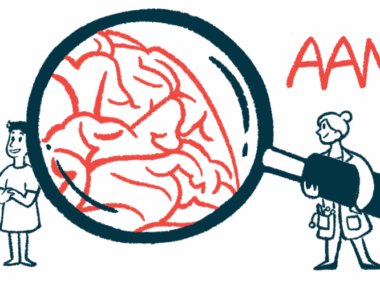Immune-related events linked to AQP4 are examined in study
Natural killer T-cells among those implicated in research on 18 NMOSD patients
Written by |

International research has uncovered a series of immune-related events that might contribute to the abnormal immune responses against the aquaporin-4 protein (AQP4), which drives neuroinflammation in cases of neuromyelitis optica spectrum disorder (NMOSD).
Among the implicated immune cell types are natural killer T-cells (NKT), which seem to be first responders to anti-AQP4 antibody complexes, and Th17 cells, which drive the final release of pro-inflammatory molecules and feed back to ensure that autoimmunity continues.
These findings also support the efficacy of currently approved NMOSD therapies that target different immune mechanisms.
The study, “Anti-aquaporin-4 immune complex stimulates complement-dependent Th17 cytokine release in neuromyelitis optica spectrum disorders,” was published in Scientific Reports.
NMOSD is a rare autoimmune disease where the body’s immune system wrongly launches an inflammatory attack against healthy parts of the nervous system. In most cases, this involves self-reactive antibodies against AQP4, a protein found on nervous system support cells called astrocytes.
The upstream immune activities that cause the body to lose tolerance for AQP4 and repeatedly launch damaging attacks are still being explored, but it has been proposed that NKT and natural killer (NK) cells of the immune system might be involved.
These cell types are known to respond to proteins of the complement cascade, a series of signaling events that amplify immune responses. Overactivation of the complement cascade is implicated in NMOSD, and several approved NMOSD therapies target this part of the immune system.
The study and its results
To learn more about the immune processes that drive anti-AQP4 autoimmunity, an international team of scientists examined the dynamics of immune cells from 18 NMOSD patients who were positive for anti-AQP4-antibodies and from 10 healthy people.
Among patients, eight had not started treatment; 10 were treated with rituximab (often known as Rituxan) and were in disease remission. Rituximab, commonly used off-label for NMOSD, works by promoting the death of immune B-cells, which are responsible for producing antibodies, including those involved in autoimmunity.
The team specifically analyzed how immune cells, particularly NKT and NK cells, grown in the lab responded to the presence of AQP4-immunocomplexes when complement proteins were also present.
An immunocomplex refers to a protein (i.e., AQP4) that’s bound to an antibody targeted against it. These immunocomplexes are typically the trigger for immune reactions.
Results showed that in an environment where both complement proteins and AQP4-immunocomplexes were present, immune cells from both patients and healthy people bound to those immunocomplexes.
In both groups, most cells bound to the complexes were NKT cells. They subsequently took on the profile of follicular helper NKT cells, a specialized subset that helps immune B-cells make antibodies. This follicular profile was enhanced in untreated NMOSD patients relative to both treated patients and healthy people.
Exposure to AQP4-immunocomplex/complement increased the levels of CD16 protein on the surface of NK cells, but not NKT cells. Also known as a type of Fc receptor, this protein recognizes antibody-coated targets and binds to them to initiate or amplify immune responses. This finding was more pronounced in NMOSD patient cells than in those from healthy people.
The presence of the AQP4-immunocomplex and complement proteins elicited strong production of several pro-inflammatory molecules in cells from NMOSD patients, but not healthy controls.
In particular, lab-grown immune cells from untreated patients produced significantly higher levels of signaling molecules related to the activities of Th17 cells than those from rituximab-treated patients. Th17 cells are a family of strong pro-inflammatory immune cells that have been frequently implicated in neuroinflammation.
Taking all evidence together, the researchers proposed a model by which the immune system responds to AQP4 and drives neuroinflammatory damage in NMOSD.
The model indicates that AQP4 immunocomplexes bind to CD16 proteins on NKT cell surfaces. Influenced by nearby activated complement proteins (especially C5) and pro-inflammatory molecules — particularly IL-6 — the NKT cells take on a follicular helper profile that drives B-cell activation.
In turn, B-cells produce pro-inflammatory molecules that drive activation of the pro-inflammatory Th17 cells. The cycle continues and amplifies when Th17 cells produce signaling molecules that feedback to further activate antibody-producing B-cells.
“Together, these findings may offer new insights into AQP4 autoimmunity, and advance NKT [follicular helper cells] as a potential new therapeutic target,” the researchers wrote.
The findings help explain why certain classes of therapies, such as C5 suppressors (Soliris, Ultomiris), IL-6 blockers (e.g., Enspryng), and B-cell depleting therapies (rituximab, Uplizna) “have been so efficacious in preventing relapses,” the team concluded — they all block key components of this process.






